Alauca, Honduras
![]()
![]()
![]()
![]()
![]()
![]()
![]() Click on Programs to learn more about their work in this community
Click on Programs to learn more about their work in this community
General Information

| Population* | 1,068 |
| Number of homes |
210 |
| Avg # of people per home | 5.1 |
| Number and % of children |
(0-5yrs): 129/12.0% (0-14y): 501/46.9% |
| Electricity | Yes |
| GPS |
N 13° 51.257’ W 086° 41.227’ |
| Municipality | Danlí |
| Department | El Paraíso |
| Corresponding Health Center | CESAMO-Alauca |
| Distance from Compounds | 2 hours, 30 minutes |
| Road conditions | Good |
* Population does not reflect how many patients will be seen on medical
brigades as many people from surrounding communities come seeking
Medical Brigades medical attention.
Top Three Needs Expressed
The top three needs expressed by the key community members are a lack of medications particularly for chronic patients like those with diabetes and hypertension. They also expressed clean drinking water and road infrastructure (several dirt roads in poor conditions) as two other community needs.
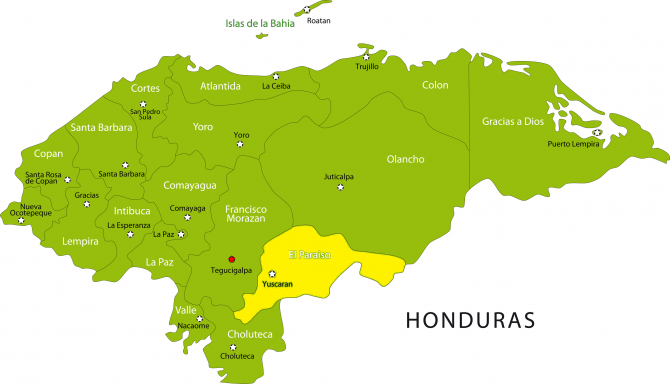
Alauca is located in the Alauca municipality and in the El Paraíso department.
Alauca’s educational system includes Kinder and Primary schools (until 6th grade), as well as a technical institute with a focus in business. In the primary school, there are approximately 340 students. It is estimated that about 95% of the community knows how to read and write.
Alauca has a water system built by the government about 25 years ago. The main problem with Alauca’s water system is that water arrives about every other day and when accessible, very little water is available to use. The water is supposedly chlorinated every 4 days1, however most people use Biosand filters distributed by Rotary Club in 2007. They estimate about 98% of the community is connected to the water system. There is a Water Council with 3 active members and Julio Moncada is the president.
Alauca does have a health center in the community, which is staffed 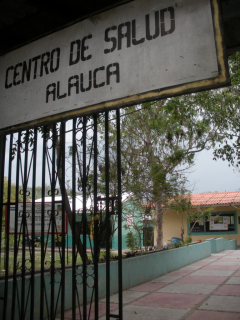 by 3 nurses and a physician. The Health Centers offers general medicine as well as dentistry. There is a Community Health Committee made up of 5 members that work directly with the Health Center nurses. Dental care is not available in the community.
by 3 nurses and a physician. The Health Centers offers general medicine as well as dentistry. There is a Community Health Committee made up of 5 members that work directly with the Health Center nurses. Dental care is not available in the community.
The most common illnesses seen by community members are the common cold, intestinal parasites, and respiratory infections. Approximately 80% of the community has latrines that currently function. 0-10% has eco-stoves (estufas justas) and about 95% is estimated to have concrete floors.
Below are some available health center statistics from the CESAMO-Alauca2:
I. Annual Morbidities, 2009: CESAMO-Alauca
|
Rank |
Morbidity |
Number of Cases (2009) |
|
1 |
Common Cold (Resfrio Comun) |
1409 |
|
2 |
Intestinal Parasites |
566 |
|
3 |
Pharyngotonsillitis |
526 |
|
4 |
Hypertension |
496 |
|
5 |
Acid Peptic Disorders |
384 |
|
6 |
Urinary infection |
313 |
|
7 |
Dermatitis |
300 |
|
8 |
Diarrhea |
219 |
|
9 |
Vaginitis |
186 |
|
10 |
Diabetes |
71 |
Centro de Salud Statistics, CESAMO-Alauca, 16 Marzo 2010
II. Caserios (small villages) served by CESAMO-Alauca, 2009
|
Caserios |
Population |
Number of Homes |
Potable Water (%) |
Latrines (%) |
Malnourished Children |
Births/ % Coverage of Pregnancies |
Order of Priority (based on HC standards) |
|
ALAUCA* |
1081 |
210 |
100 |
Not Avail. |
30 |
28 / 100% |
5 |
|
San Antonio |
421 |
NA |
NA |
NA |
47 |
8 / 80% |
4 |
|
Momotombo |
291 |
NA |
NA |
NA |
37 |
4 / 80% |
2 |
|
Conojoja |
81 |
NA |
NA |
NA |
11 |
0 / 0% |
3 |
|
Anonos |
270 |
NA |
NA |
NA |
65 |
5 / 100% |
3 |
|
Chichigua* |
478 |
NA |
NA |
NA |
29 |
7 / 70% |
4 |
|
Calpules |
49 |
NA |
NA |
NA |
20 |
1 / 50% |
3 |
|
Agua Zarca |
177 |
NA |
NA |
NA |
75 |
3 / 75% |
2 |
|
Los Tunos |
142 |
NA |
NA |
NA |
60 |
3 / 100% |
1 |
|
Manzanillas |
179 |
NA |
NA |
NA |
100 |
7 / 100% |
3 |
|
La Ojagua |
174 |
NA |
NA |
NA |
57 |
5 / 100% |
1 |
Centro de Salud Statistics, Centro de Salud Regional-Danlí, 14 Marzo 2010
*Global Brigades also works in these communities with medical brigades
(NA) = Not Available data
The average family income per month is estimated to be 1500 Lempiras, which is approximately L300 (US $15.87) per person3. The majority of homes are made of adobe. The main form of employment in Alauca is agriculture on rented land, and the main products that are cultivated are corn and beans. Alauca does have a community bank (caja rural) that was started by FUNDER in 2007. The president is Guillermo Gonzalez.
In 2006, La Ojagua which belongs to Alauca’s network of caseríos was published to have 24 of its 26 homes living in poverty (less than L930=US$49.23 per person per month), 16 of which were living in extreme poverty (less than L617=US$ 32.66). It was ranked 46th poorest out of the 80 communities that were investigated and ranked in the department of El Paraíso by PRAF (Programa de Asignación Familiar).
Alauca has not previously received medical or dental brigades outside of GB. Other organizations that have worked in the community in the past or present are Club Rotario and PRAACAGUA in 2007 with the Biosand filter project, the FHIS (Honduran Social Investment Fund) that constructed 19 new homes in 2002, and the World Food Programme that constructed improved stoves (fogones mejorados) in 1998 and currently carries out a children’s food program. The government built latrines in the community over 10 years ago.
Alauca is a relatively large and yet geographically isolated community. Alauca's health center serves 11 smaller surrounding communities. The staff at the Health Center is collaborative and willing to support future medical brigades and projects.
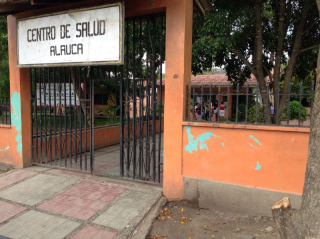 |
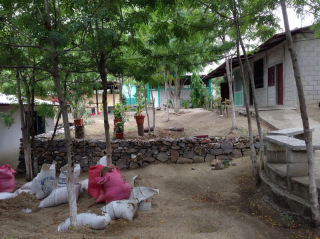 |
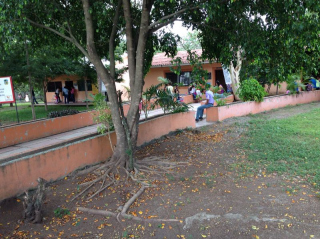 |
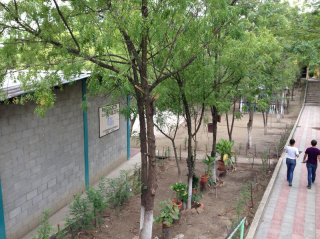 |
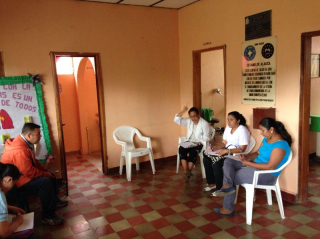 |
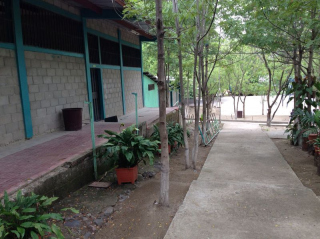 |
Source of information: Key informant interview, Centro de Salud statistics
Date of interview: 16 March 2010
1The accepted regulation frequency for chlorinating water is every 4 days.
2CESAMO and CESAR are terms used for types of health centers. CESAMOs are larger, more comprehensive facilities that usually have a physician on staff at all times and occasionally a dentist. CESARs are more remote, less equipped facilities, usually with 1-2 nurses on staff.
3According to Red Solidaria and World Food Programme in Honduras, the average family is approximated at 5 people per household, the poverty line is L930 (US$49.23) per person per month, and the extreme poverty line is L617 (US$32.66) per person per month.